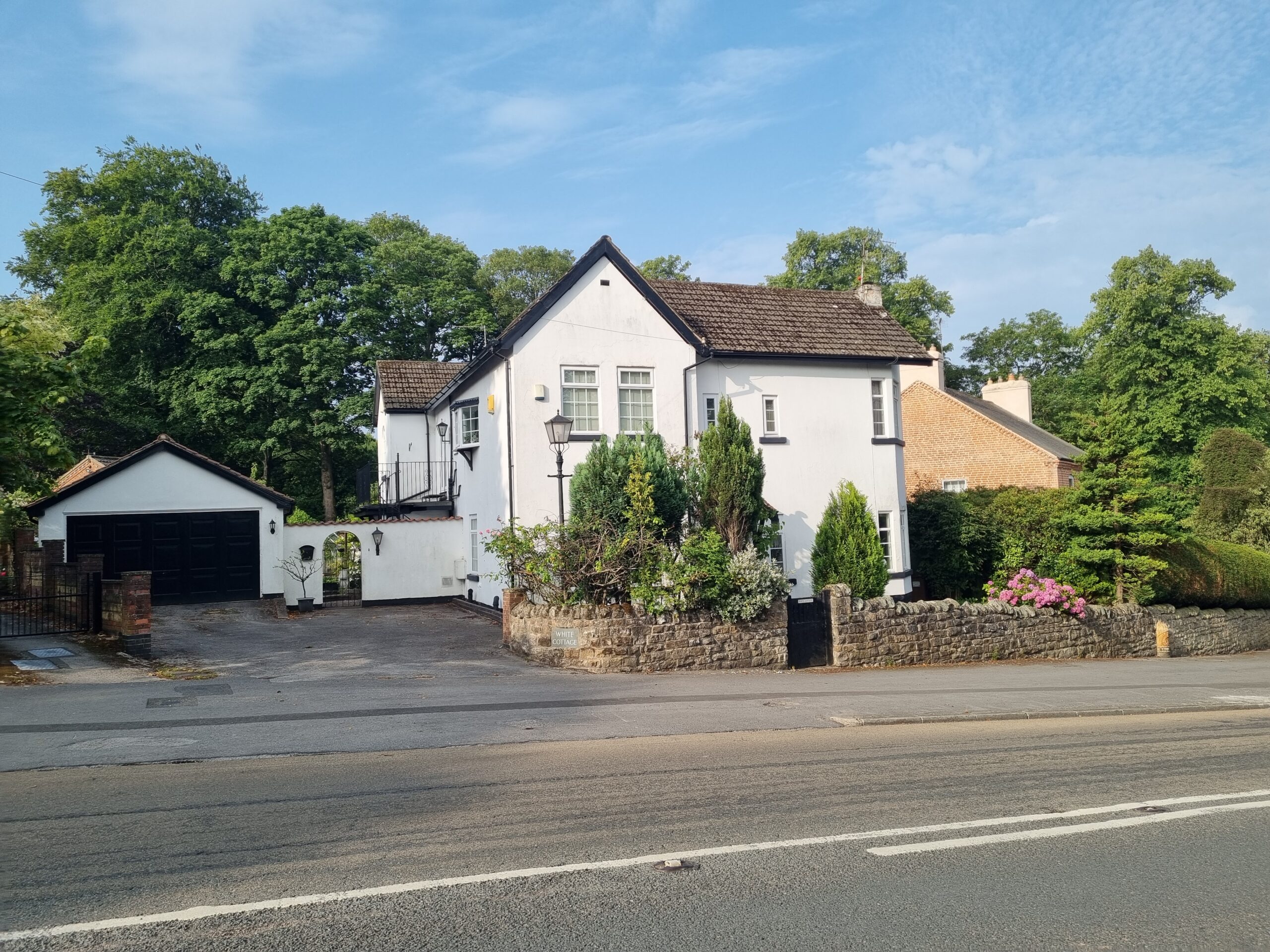Tucked into the leafy slopes of Woodthorpe Drive in Nottingham stand two neighbouring properties that have quietly borne witness to more than a century of local transformation. White Cottage and Pelham House are fine examples of early suburban architecture. They represent the personal histories of families whose lives mirrored the professional and social currents of their time.
Woodthorpe Drive was originally known as Scout Lane and was originally on farmland before the gradual development of Woodthorpe in the late 19th century. Initially, it was a boundary of a 40-acre farm owned by Alfred Pogson. A sketch map from 1871 shows proposed a 50ft wide road along the lane for villa construction, but these plans were not fully realized. White Cottage and Pelham House were built in this period, and are shown on a map of Scout Lane from 1885.
20th Century Occupants
White Cottage was home to Lionel Bartley Harvey, born in 1881 in Dorchester, Dorset. By the 1920s, he was firmly established in the Midlands, working as a manager for Harvey & Harvey (Derby) Ltd, a brewing firm based on Kedleston Road in Derby. By the late 1920s and into the 1930s, electoral rolls confirm that Lionel had moved his family to White Cottage on Woodthorpe Drive, placing him in the heart of Nottingham’s growing suburban fringe.
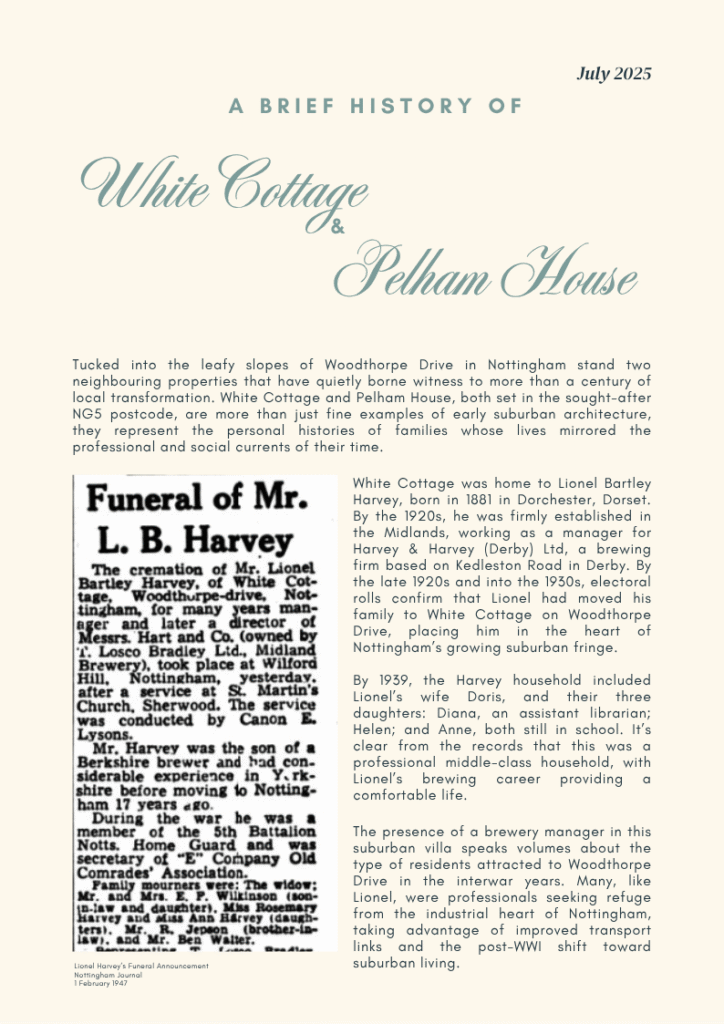
By 1939, the Harvey household included Lionel’s wife Doris, and their three daughters: Diana, an assistant librarian; Helen; and Anne, both still in school. It’s clear from the records that this was a professional middle-class household, with Lionel’s brewing career providing a comfortable life.
The presence of a brewery manager in this suburban villa speaks volumes about the type of residents attracted to Woodthorpe Drive in the interwar years. Many, like Lionel, were professionals seeking refuge from the industrial heart of Nottingham, taking advantage of improved transport links and the post-WWI shift toward suburban living.
From Lace Manufacturing To Banking
Next door, Pelham House had its own distinguished lineage. In 1911, it was occupied by John Chal Bywater, born in 1872 in Nottingham and a director of a lace company—a role reflective of Nottingham’s international reputation as a centre of lace manufacturing. He lived there with his wife Annie and a domestic groom, Henry Wilders, suggesting a household of significant standing.
By the time of the 1939 Register, the house had changed hands to John P. Jones, a bank accountant born in 1898, along with his wife Ethel and their son Brian, born in 1931. This marks an interesting transition in the type of professional attracted to the area—from industrial magnates like Bywater to financial and managerial professionals like Jones.
That both houses passed from industrial to white-collar occupants mirrors a broader shift in Nottingham’s economy in the early 20th century—from manufacture to management, from factories to offices.
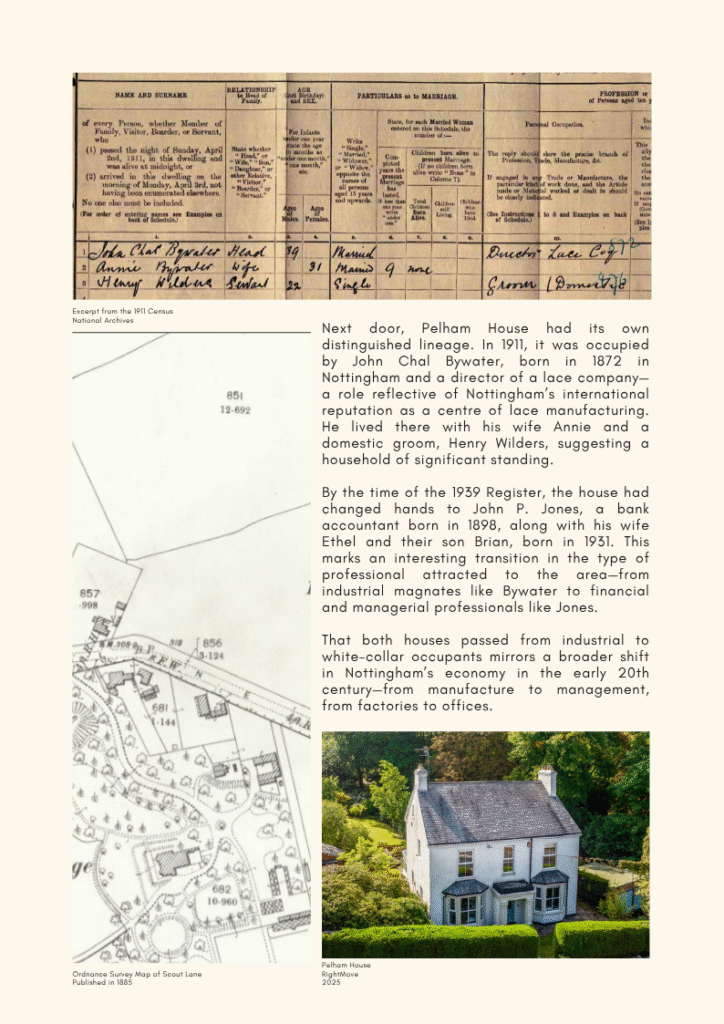
Though distinct in style and history, White Cottage and Pelham House are united by more than just their shared postcode. Each reflects a chapter in Nottingham’s suburban evolution: from the booming lace industry and regional brewing scene to the growing importance of financial and civic professionals.
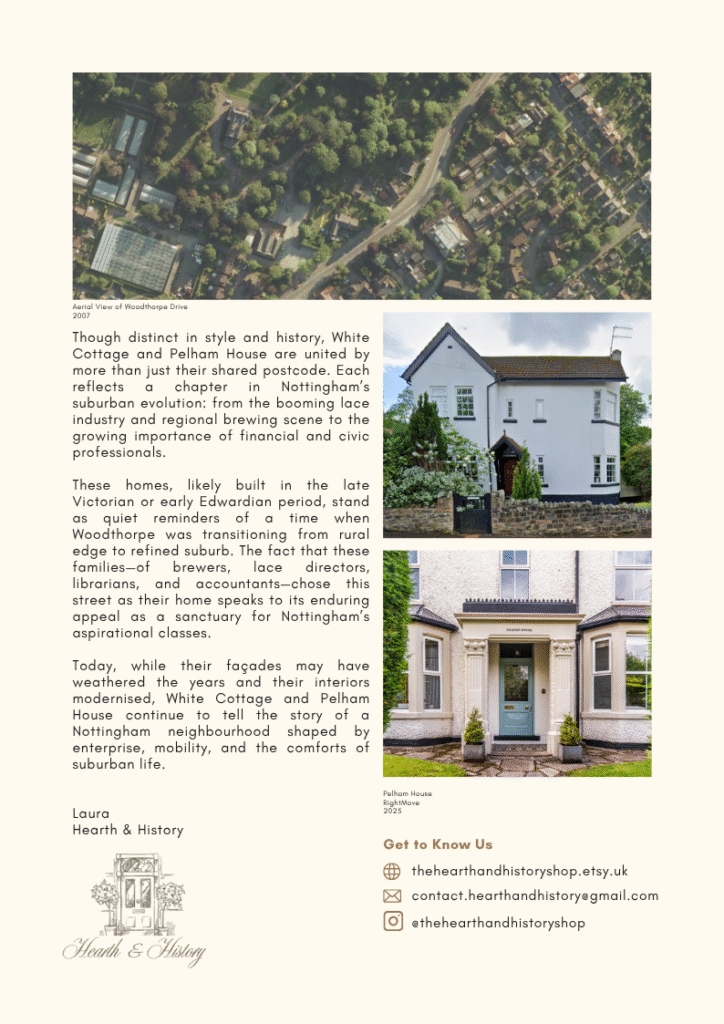
These homes stand as quiet reminders of a time when Woodthorpe was transitioning from rural edge to refined suburb. The fact that these families—of brewers, lace directors, librarians, and accountants—chose this street as their home speaks to its enduring appeal as a sanctuary for Nottingham’s aspirational classes.
Today, while their façades may have weathered the years and their interiors modernised, White Cottage and Pelham House continue to tell the story of a Nottingham neighbourhood shaped by enterprise, mobility, and the comforts of suburban life.
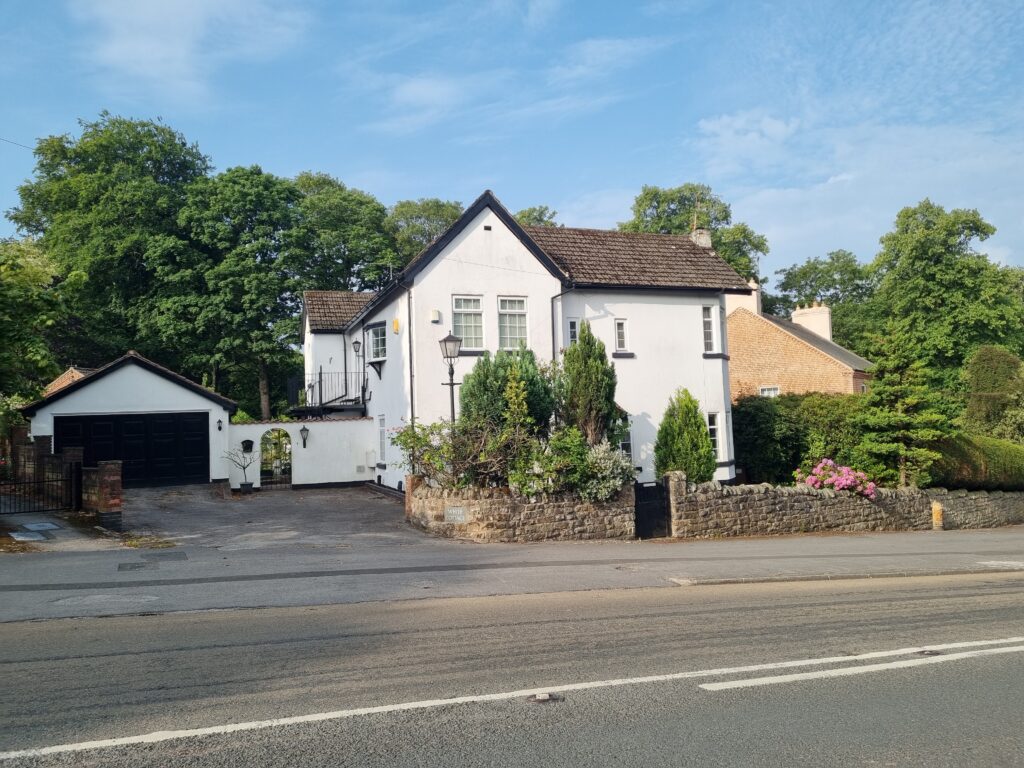
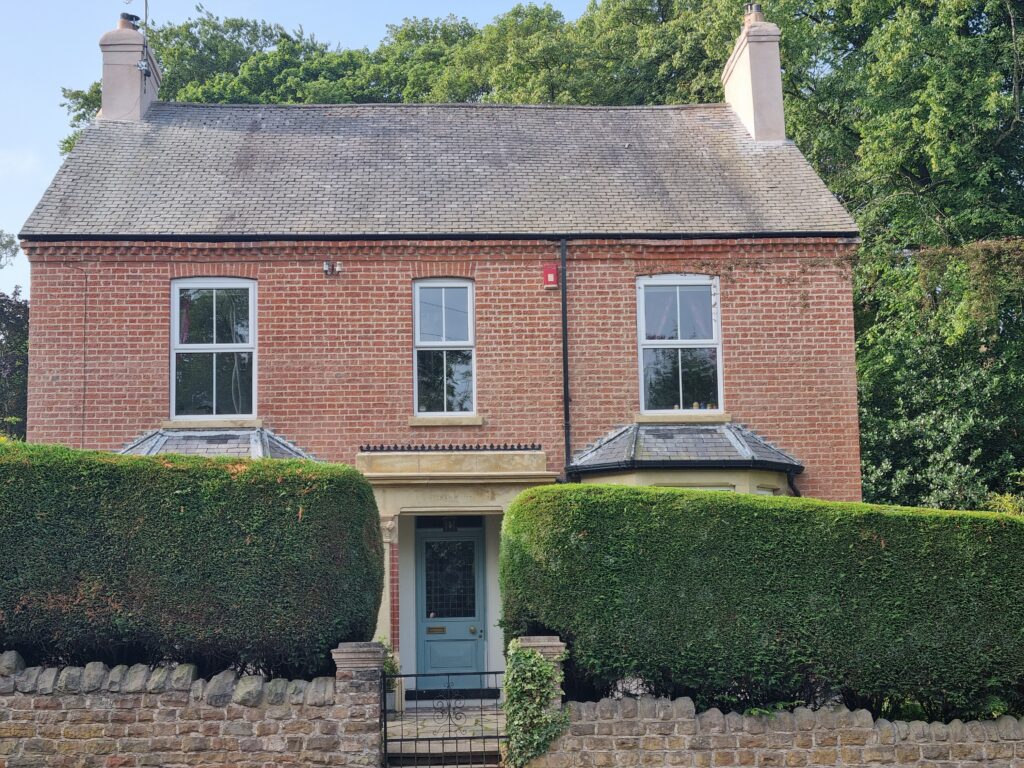
With many thanks to Laura at Hearth and History for this article.
Hearth & History specialise in creating bespoke house history books that tell the unique stories of homes and their past residents. These beautifully designed keepsakes are perfect for homeowners, gifts, or anyone curious about the past.
Interested in learning the history or your home?
Contact Laura at: hearthandhistory@gmail.com

